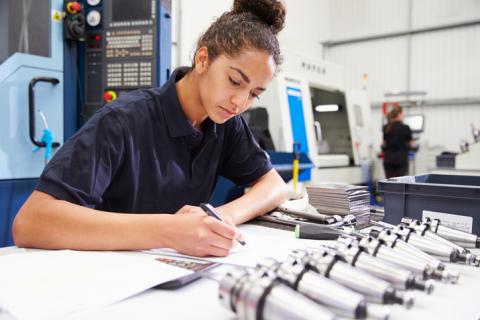Education. From the age of five until we become real adults, we spend most of our time in a place of learning. It’s arguably the most important time of our lives because it shapes who we are going to be. The things we learn, the subjects we study, our teachers, our friends – these are the factors that help to determine our future.
I started my education journey in Leicester (you might know of it because we were good at football once). At school I was a "high achiever". I enjoyed most subjects, which made it quite difficult whenever we had to choose between them. I was a bit of a science and maths nerd, but I also really enjoyed textile technology, so for my A levels I decided to study them all.
Inspired to study engineering?
What can you do with an aerospace engineering degree?
What can you do with a chemical engineering degree?
What can you do with a civil engineering degree?
What can you do with an electrical engineering degree?
What can you do with a general engineering degree?
What can you do with a mechanical engineering degree?
Most of my classes were mixed but even at this age, the trends were clear. More boys than girls studied science and more girls than boys studied arts and humanities. That's not always strictly true: my biology class was mainly female, my physics and maths classes were mainly male. However, it is estimated that only 18 per cent of girls continue to take a STEM subject from GCSE to A level. But those that do, outperform boys in almost every subject.
I went on to study textile science and technology at university – this was possibly the only degree that cleverly combined all of the subjects I loved. I was one of 14 students when I started my course and, perhaps unsurprisingly, one of 11 female students, probably because the degree contained the word textiles. I soon realised that this female bias existed pretty much across the whole of the textiles department.
From textiles, I moved to materials science to pursue a PhD. It straightaway sounds more technical, more challenging and more male. It might surprise you to know that 40 per cent of graduates of the physical sciences are female. This figure is much lower for engineering and technology, where women account for only 14 per cent of graduates. In the world of STEM academia, an even smaller proportion of the workforce is made up of women. Why?
Women in STEM: how can we encourage more women into engineering?
In my experience, lecturers and professors tend to be of a certain age: it takes a wealth of experience to get to their level. There are a number of campaigns and stories that support and encourage females in STEM, such as Athena Swan and International Women in Engineering Day and they have brought about a mini-revolution in our thinking. It will take time to see a change in the workplace, but I have faith that we will.
I am a woman who loves science and engineering, and I get to live that every day. Every female should have access to STEM subjects and be encouraged to study them. And so should every male. For me, it’s not about getting more women into engineering. It’s about ensuring that every student is supported in the decisions they make on their education journey. It’s about achieving equality on a level where gender isn't even a factor.
It’s also about supporting our population in a way that ensures family vs career is no longer a dilemma. International Women in Engineering Day is a great outlet for supporting females from a young age, but I wait in anticipation of a time when we instead celebrate female scientists and engineers without differentiation from males.
Neha Chandarana is a PhD research student in materials for demanding environments at the University of Manchester’s Northwest Composite Centre

Comments